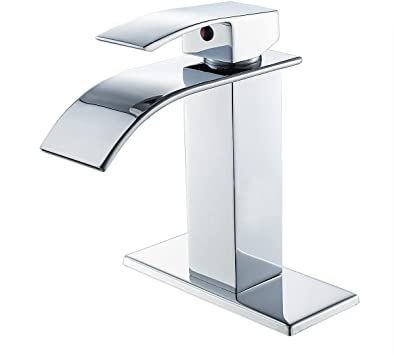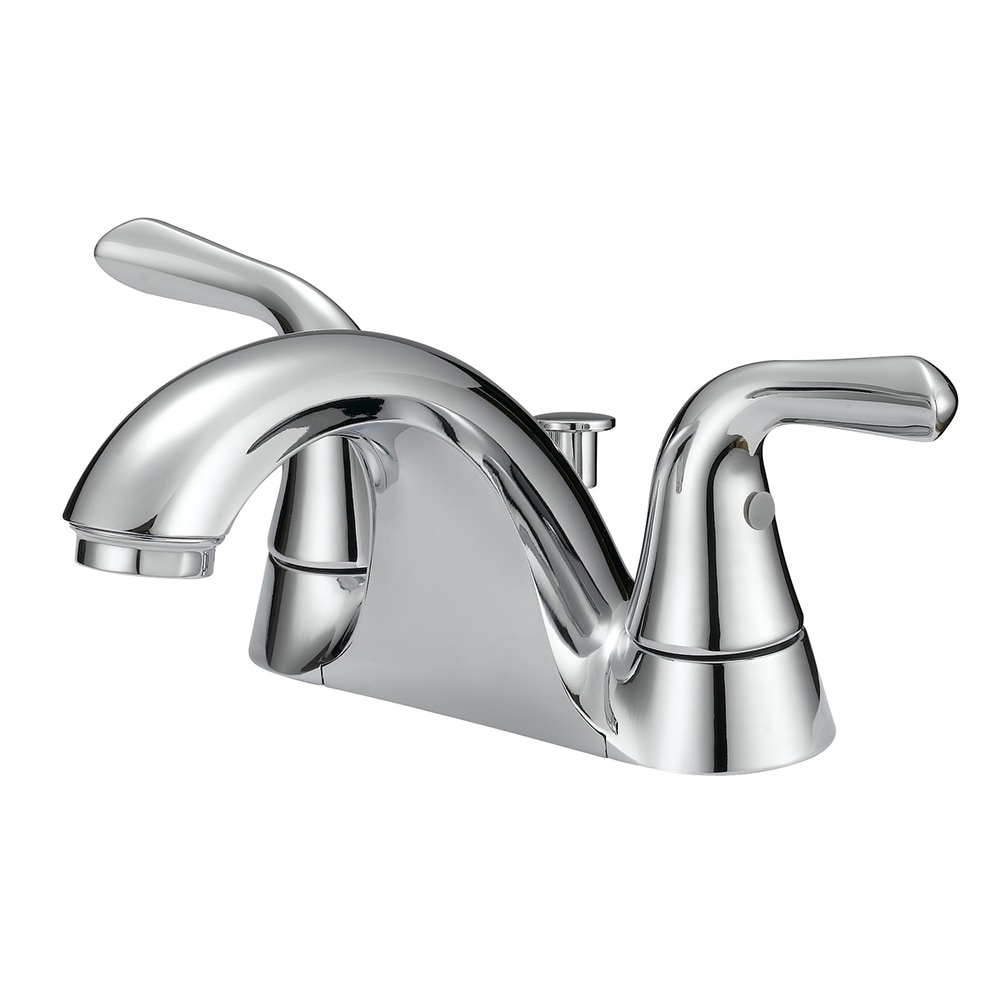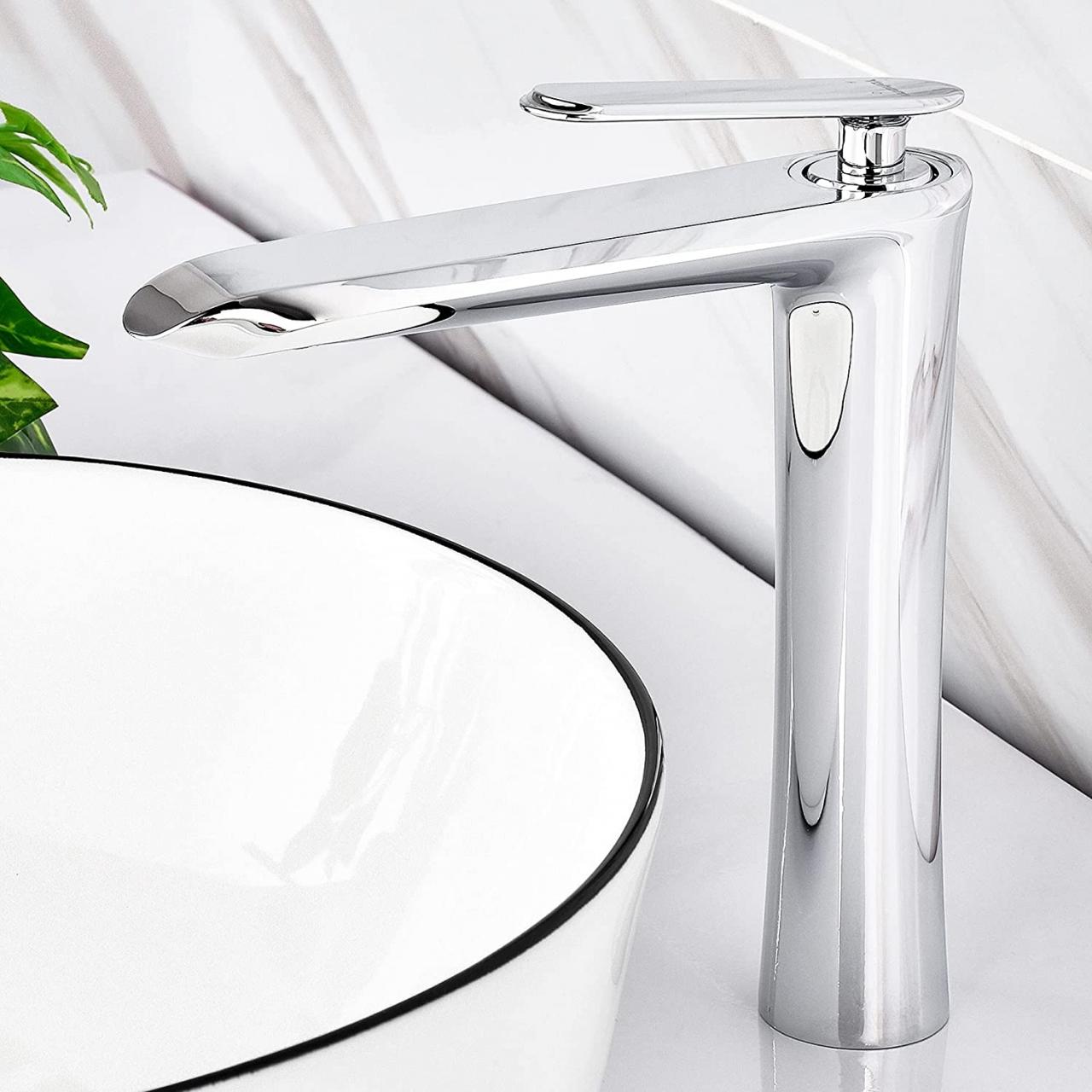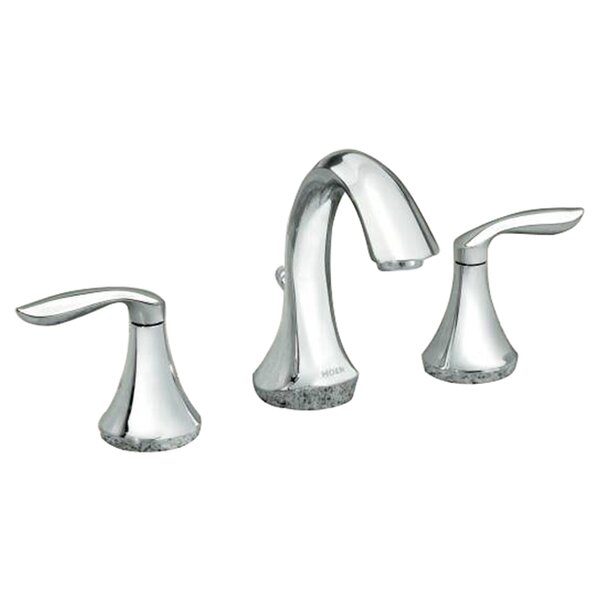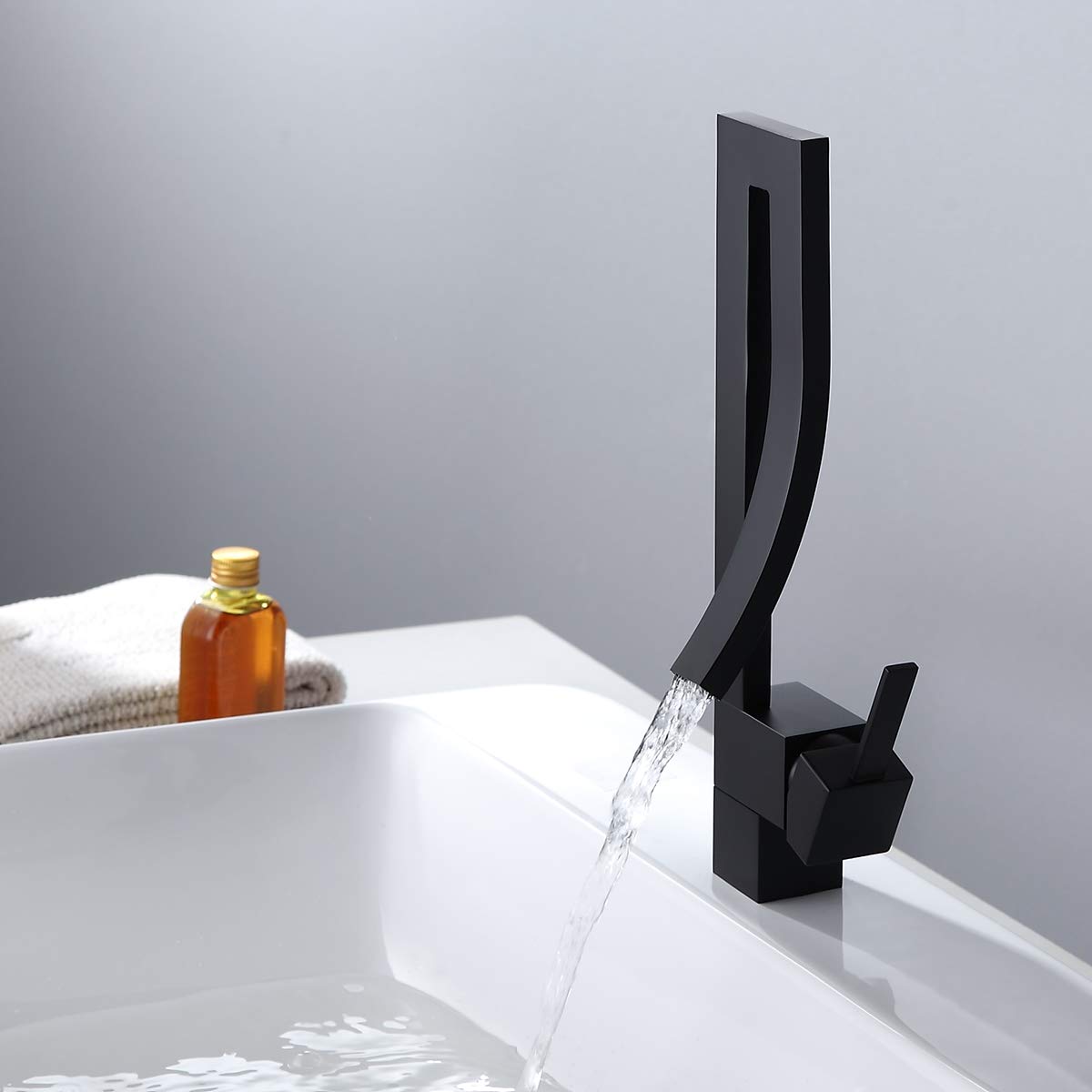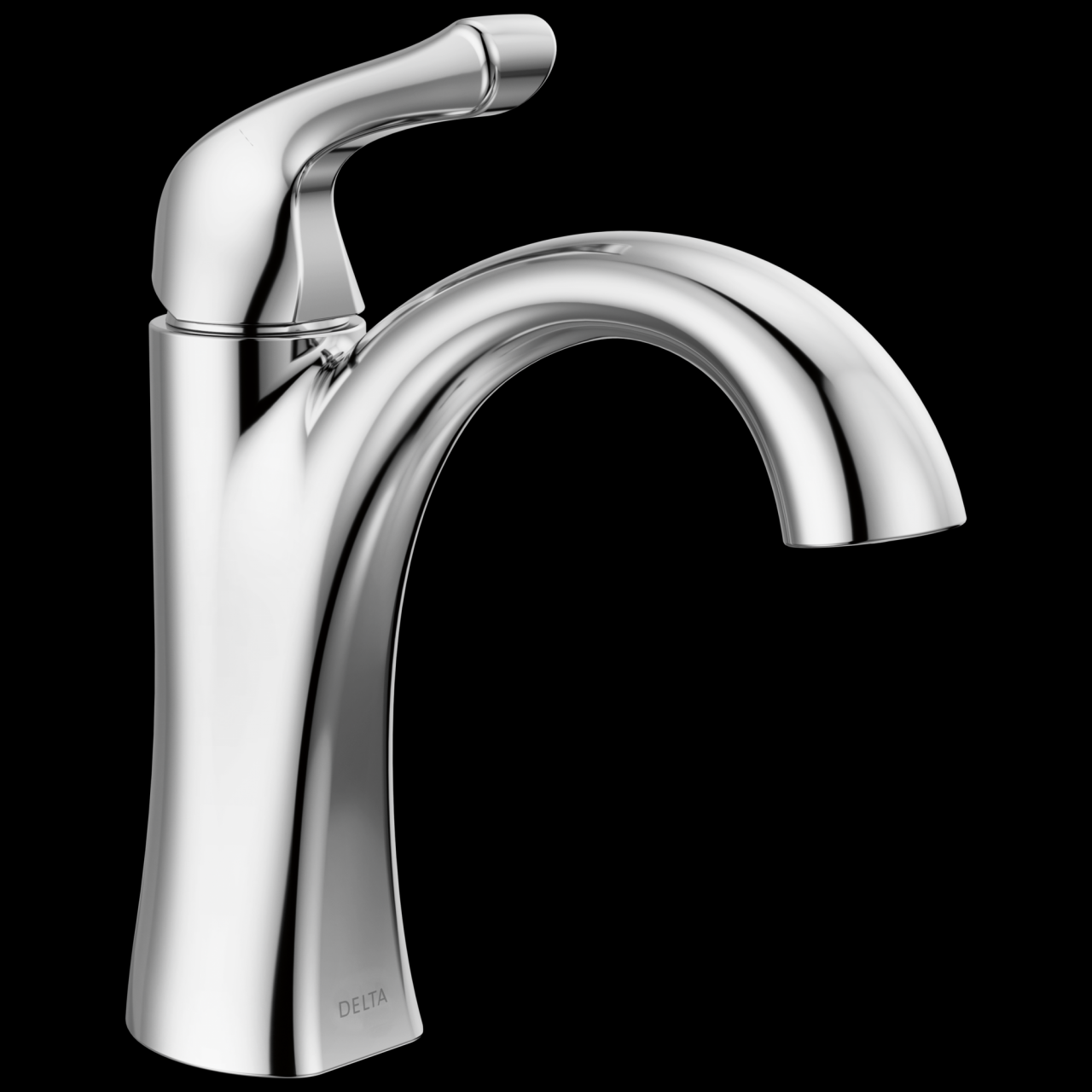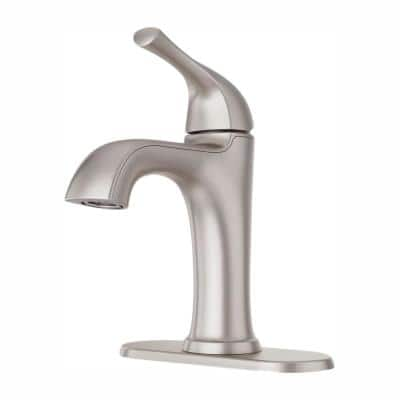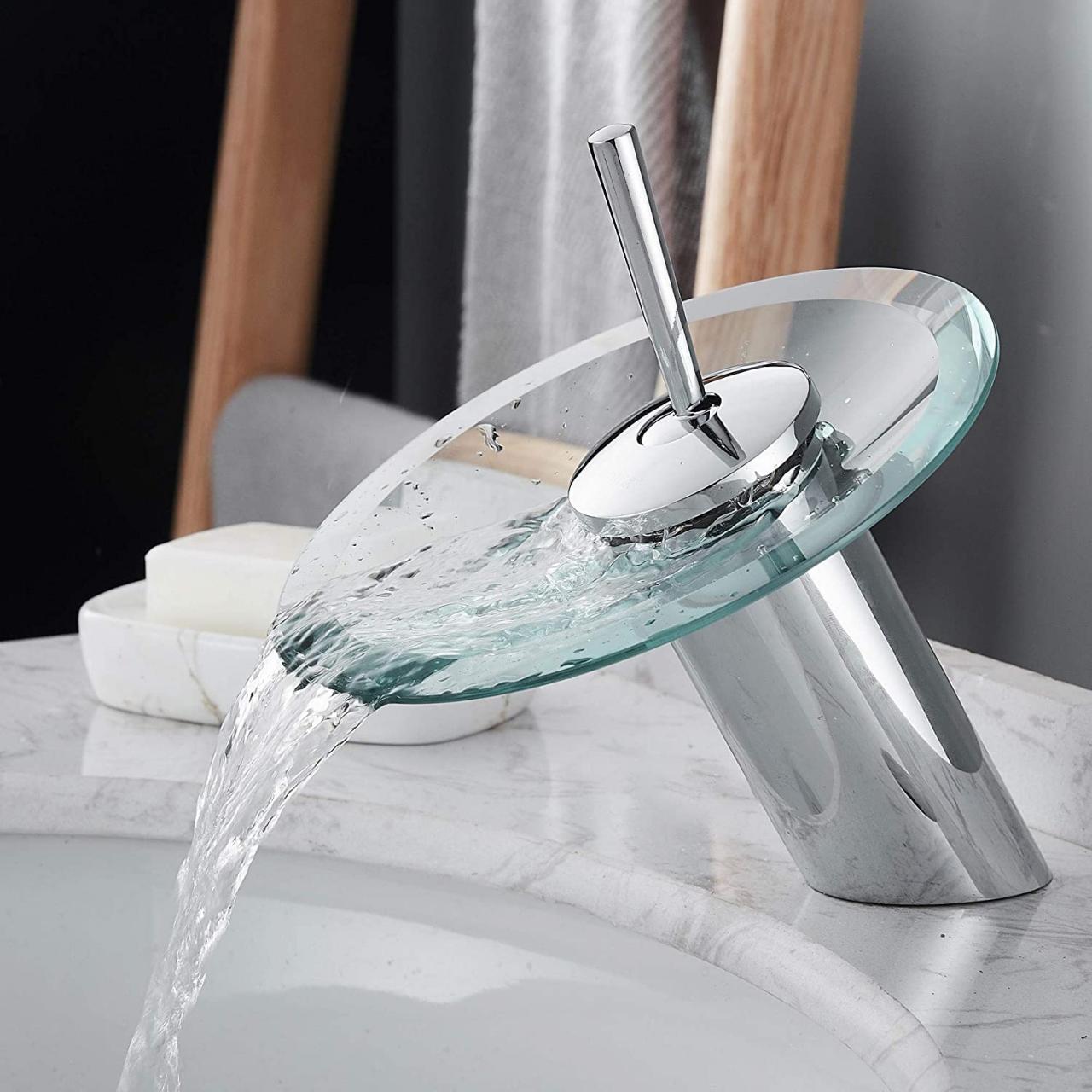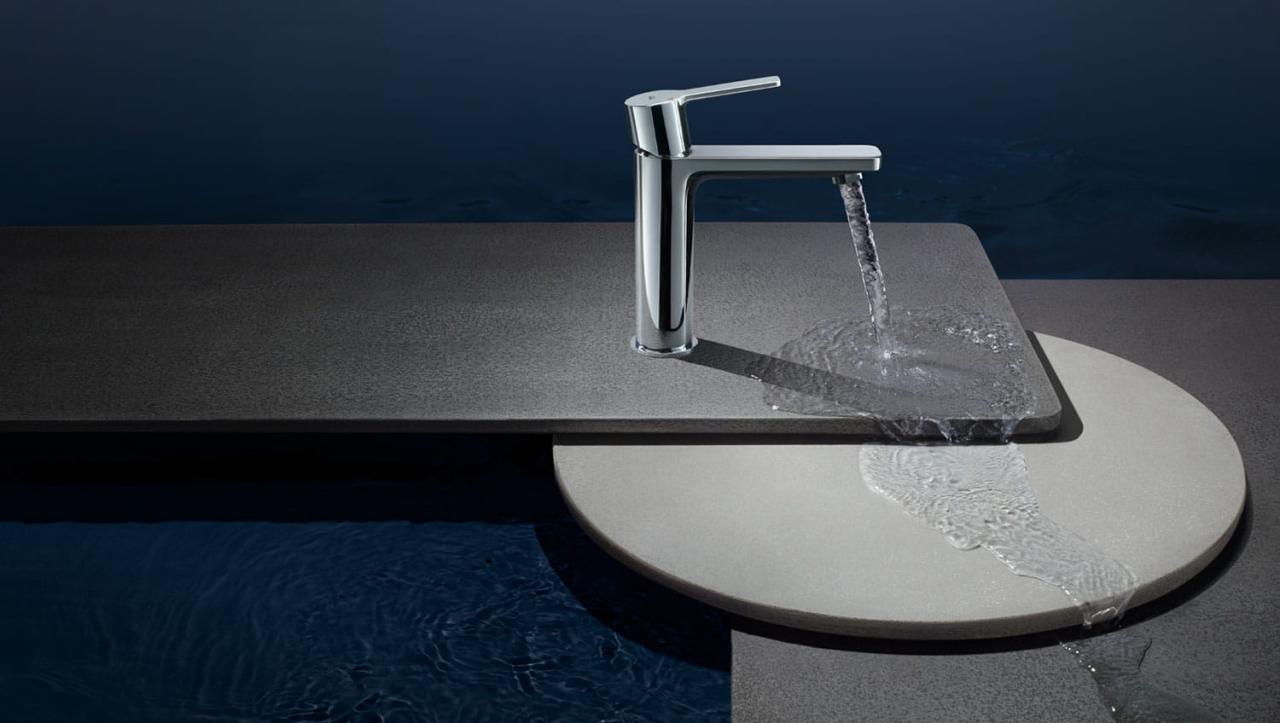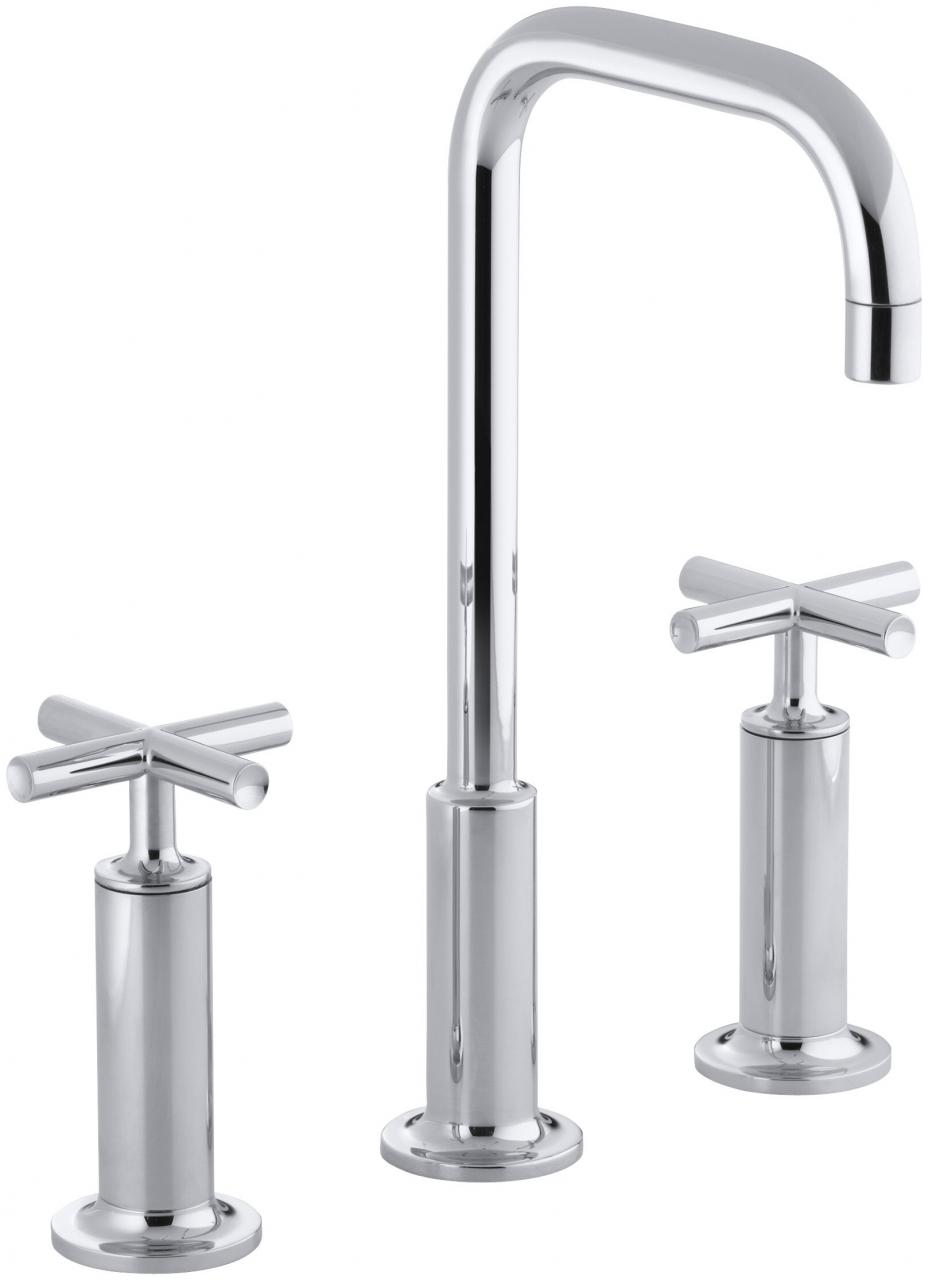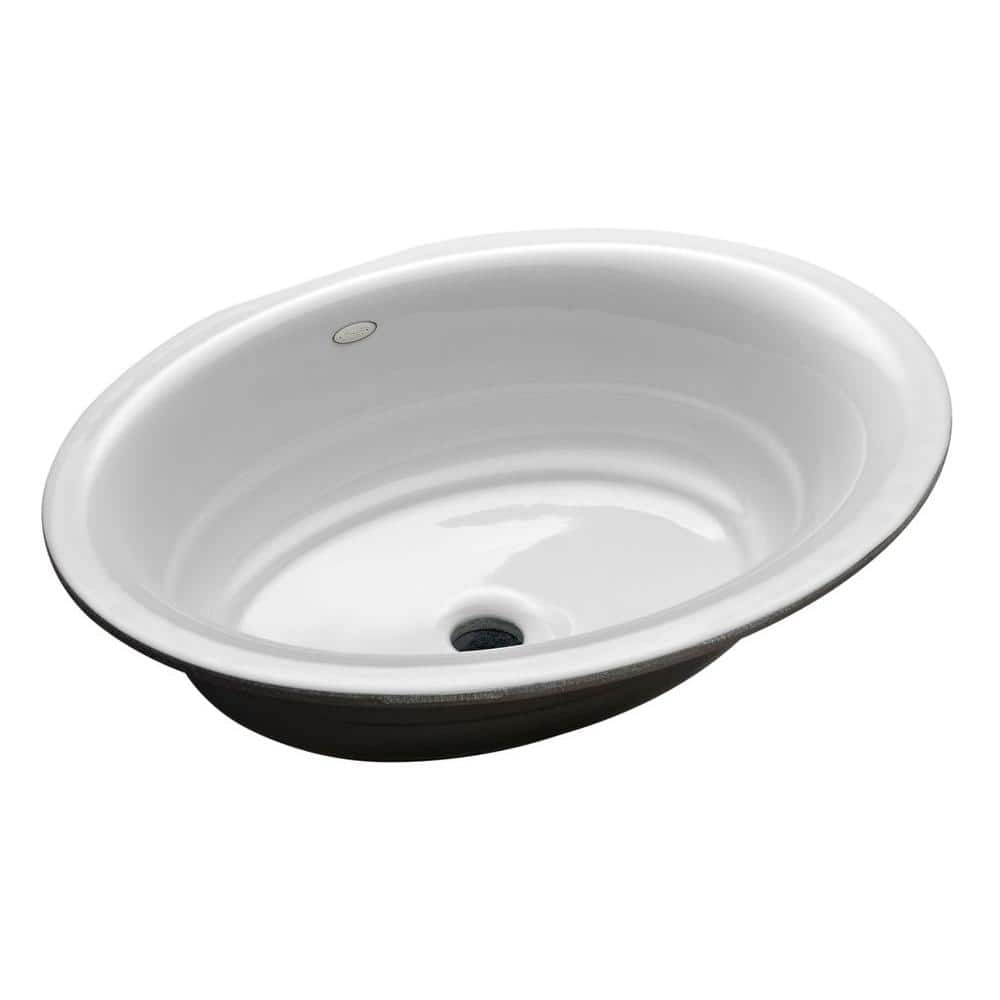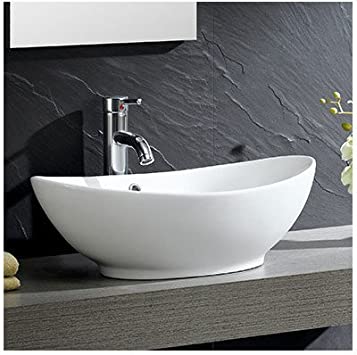Choosing the right bathroom sink fixtures and faucets is essential for both functionality and style. This guide will walk you through everything you need to know about selecting, installing, and maintaining bathroom sink fixtures and faucets.
Types of Bathroom Sink Faucets
- Single-Hole Faucets: Single-hole faucets are a popular choice for modern bathrooms. They combine the spout and mixing handles (or lever) into a single unit. This type of faucet requires only one drilled hole in the sink or countertop, making installation straightforward. I love how sleek and minimalistic they look, fitting well in contemporary designs.
- Centerset Faucets: Centerset faucets are designed for sinks with three holes spaced 4 inches apart. They usually have a compact design with a single spout and two handles mounted on a plate. These faucets are perfect for small bathrooms, as they don’t take up much space. I’ve found them to be a versatile option that works well in both traditional and modern settings.
- Widespread Faucets: Widespread faucets are made up of three separate pieces: two handles and a spout. These pieces can be installed 6 to 16 inches apart, making them suitable for larger sinks. Their flexible installation allows for a customized look, which can enhance the aesthetic appeal of your bathroom. In my experience, widespread faucets are ideal for adding a touch of elegance to any bathroom.
- Wall-Mounted Faucets: Wall-mounted faucets are installed on the wall above the sink, leaving the countertop clear. This type of faucet is excellent for vessel sinks or when you want to achieve a clean, uncluttered look. I’ve seen wall-mounted faucets become a growing trend in modern bathrooms due to their unique appearance and space-saving benefits.
- Touchless Faucets: Touchless faucets use motion sensors to detect your hands and turn the water on and off automatically. These are a fantastic choice for those who prioritize hygiene and convenience. I appreciate how they reduce water wastage and make washing hands a seamless experience, especially in busy households.
- Bridge Faucets: Bridge faucets combine old-world charm with modern functionality. They feature a bridge-like design connecting the hot and cold water supplies to the spout. Bridge faucets are often found in vintage or farmhouse-style bathrooms. I find them to be an eye-catching centerpiece that adds character to the space.

Materials and Finishes
Brass
Brass is a durable and corrosion-resistant material commonly used in bathroom faucets. It’s a timeless choice that complements various styles. I always recommend brass faucets for their longevity and classic appeal.
Stainless Steel
Stainless steel faucets are known for their durability and resistance to rust and stains. They are ideal for modern bathrooms and offer a sleek, polished look. In my opinion, stainless steel is a practical and stylish choice that stands the test of time.
Chrome
Chrome faucets are popular for their shiny, reflective surface and affordability. They are easy to clean and maintain, making them a favorite in many households. I’ve found that chrome finishes work well in contemporary and minimalist designs.
Bronze
Oil-rubbed bronze faucets have a warm, dark finish that adds a rustic or vintage touch to the bathroom. They are perfect for creating a cozy, inviting atmosphere. I love how bronze faucets bring a sense of history and elegance to the space.
Nickel
Nickel finishes, such as brushed nickel, offer a softer, matte look compared to chrome. They are less prone to showing water spots and fingerprints. In my experience, nickel faucets provide a subtle, sophisticated appearance that blends seamlessly with various decor styles.
Black
Black faucets are a bold and trendy choice that can make a striking statement in the bathroom. They are versatile and can complement both modern and industrial designs. I find that black faucets add a touch of drama and modernity to the bathroom, making it stand out.
Installation and Maintenance
Preparing for Installation
Before installing a new faucet, it’s crucial to measure the sink and ensure it has the correct number of holes for your chosen faucet. Turn off the water supply and gather all necessary tools, such as a wrench, plumber’s tape, and a basin wrench. I’ve learned that thorough preparation can save you time and hassle during the installation process.
Installing the Faucet
Follow the manufacturer’s instructions for installing your faucet. This usually involves connecting the faucet to the water supply lines and securing it to the sink or countertop. Use plumber’s tape to ensure a watertight seal on threaded connections. I’ve found that patience and attention to detail are key to a successful installation.
Testing for Leaks
After installation, turn on the water supply and check for any leaks. Tighten connections if necessary and ensure the faucet operates smoothly. In my experience, it’s essential to address any leaks immediately to prevent water damage and ensure the faucet functions properly.
Regular Cleaning
Regular cleaning is vital to maintaining the appearance and functionality of your faucet. Use mild soap and water to clean the surface, and avoid abrasive cleaners that can damage the finish. I recommend wiping down the faucet after each use to prevent water spots and mineral buildup.
Addressing Mineral Buildup
Hard water can cause mineral buildup on faucets, affecting their performance. Soak a cloth in vinegar and wrap it around the affected areas to dissolve the buildup. Rinse thoroughly with water. I’ve found this method to be effective in keeping faucets looking and working like new.
Long-Term Maintenance
Regularly check for any loose parts or leaks and address them promptly. Replace worn-out washers or O-rings to prevent dripping. In my experience, routine maintenance can extend the lifespan of your faucet and keep it functioning efficiently.
Water Efficiency
Low-Flow Faucets
Low-flow faucets are designed to reduce water usage without compromising performance. They use aerators to mix air with water, creating a steady stream while using less water. I recommend low-flow faucets for their environmental benefits and cost savings on water bills.
WaterSense Label
Look for faucets with the WaterSense label, which indicates they meet EPA standards for water efficiency. These faucets can reduce water usage by up to 30%. I’ve found that choosing WaterSense-certified faucets is an easy way to make your bathroom more eco-friendly.
Smart Faucets
Smart faucets offer advanced features such as touchless operation, temperature control, and water usage monitoring. These faucets can help you conserve water and enhance convenience. I love how smart faucets combine technology with sustainability.
Aerators
Installing aerators on your faucet can further reduce water flow and increase efficiency. Aerators are inexpensive and easy to install, making them a great addition to any faucet. In my experience, aerators are a simple yet effective way to save water.
Fixing Leaks
Even a small drip can waste a significant amount of water over time. Regularly check for and fix any leaks in your faucet. I’ve found that addressing leaks promptly not only conserves water but also prevents potential damage to your sink and countertop.
Educating Household Members
Educate everyone in your household about the importance of water conservation and how to use faucets efficiently. Simple habits like turning off the tap while brushing teeth can make a big difference. I believe that fostering a water-saving mindset is crucial for long-term sustainability.
Style and Design
Modern
Modern bathroom faucets feature clean lines, minimalistic designs, and innovative technology. They often come in sleek finishes like chrome or stainless steel. I love how modern faucets add a contemporary touch to the bathroom and enhance its overall aesthetic.
Traditional
Traditional faucets have ornate designs and classic finishes like brass or bronze. They are perfect for creating a timeless, elegant look. In my experience, traditional faucets add a touch of sophistication and charm to the bathroom.
Transitional
Transitional faucets blend elements of both modern and traditional styles. They offer versatility and can fit into various design themes. I appreciate how transitional faucets provide a balanced look that can adapt to changing decor trends.
Industrial
Industrial faucets feature rugged designs and finishes like matte black or brushed nickel. They are ideal for creating a bold, edgy look. I find that industrial faucets add a unique, contemporary vibe to the bathroom.
Vintage
Vintage faucets have a nostalgic appeal with intricate details and antique finishes. They are perfect for adding character and history to the bathroom. In my opinion, vintage faucets are a great way to create a cozy, inviting atmosphere.
Minimalist
Minimalist faucets focus on simplicity and functionality, often with single-handle designs and sleek finishes. They are ideal for small bathrooms or those seeking a clean, uncluttered look. I love how minimalist faucets contribute to a serene and organized bathroom environment.
Common Mistakes to Avoid
Ignoring Compatibility
One common mistake is not checking the compatibility of the faucet with the sink or countertop. Ensure that the faucet fits the number of holes and spacing of your sink. I’ve seen many instances where improper measurements led to installation issues and additional costs.
Overlooking Water Pressure
Not considering your home’s water pressure can lead to poor faucet performance. Choose a faucet that is compatible with your water pressure to ensure optimal functionality. I recommend consulting with a plumber if you’re unsure about your water pressure requirements.
Skipping Regular Maintenance
Neglecting regular maintenance can cause your faucet to wear out faster and lead to leaks. Make it a habit to clean and inspect your faucet regularly. In my experience, routine maintenance can prevent costly repairs and extend the life of your faucet.
Choosing Style Over Function
While style is important, prioritizing appearance over functionality can lead to dissatisfaction. Ensure that the faucet you choose meets your practical needs and complements your bathroom decor. I believe that a balance between style and function is key to a successful bathroom upgrade.
Not Considering Water Efficiency
Choosing a faucet without considering its water efficiency can result in higher water bills and environmental impact. Opt for WaterSense-certified faucets or those with low-flow options. I’ve found that water-efficient faucets are beneficial for both your wallet and the planet.
DIY Installation Without Proper Knowledge
Attempting to install a faucet without proper knowledge or tools can lead to mistakes and potential damage. If you’re not confident in your DIY skills, it’s best to hire a professional plumber. I’ve seen many DIY installations go wrong, resulting in costly repairs.
What type of faucet is best for a small bathroom?
For small bathrooms, I recommend single-hole or centerset faucets. They have a compact design that saves space and provides a clean, uncluttered look. Single-hole faucets are particularly sleek and modern, while centerset faucets offer a more traditional appearance.
How do I maintain my bathroom faucet to prevent mineral buildup?
To prevent mineral buildup, regularly clean your faucet with mild soap and water. Avoid abrasive cleaners that can damage the finish. If you notice a buildup, soak a cloth in vinegar and wrap it around the affected areas to dissolve the minerals. Rinse thoroughly with water afterward.
Are touchless faucets worth the investment?
Yes, touchless faucets are worth the investment for their convenience, hygiene benefits, and water efficiency. They reduce the spread of germs and can help conserve water by turning off automatically when not in use. I find them especially useful in households with children or elderly members.
What should I do if my faucet starts leaking?
If your faucet starts leaking, check for any loose parts and tighten them if necessary. If the leak persists, it may be due to worn-out washers or O-rings. Replacing these parts can often solve the issue. If you’re unsure how to proceed, consulting a plumber is a good idea.
How do I choose a faucet finish that matches my bathroom decor?
When choosing a faucet finish, consider the overall style and color scheme of your bathroom. Chrome and stainless steel are versatile and match well with modern designs. For a warm, rustic look, opt for oil-rubbed bronze or brass. Brushed nickel offers a subtle, matte finish that complements various styles.
Can I install a new faucet myself, or should I hire a professional?
Installing a faucet yourself is possible if you have the right tools and follow the manufacturer’s instructions carefully. However, if you’re not confident in your DIY skills or encounter any difficulties, hiring a professional plumber is a wise choice. I’ve seen many successful DIY installations, but professional help can ensure a smooth and error-free process.
Purist Widespread Bathroom Sink Faucet with High Cross Handles and High Gooseneck Spout
Related Posts:
